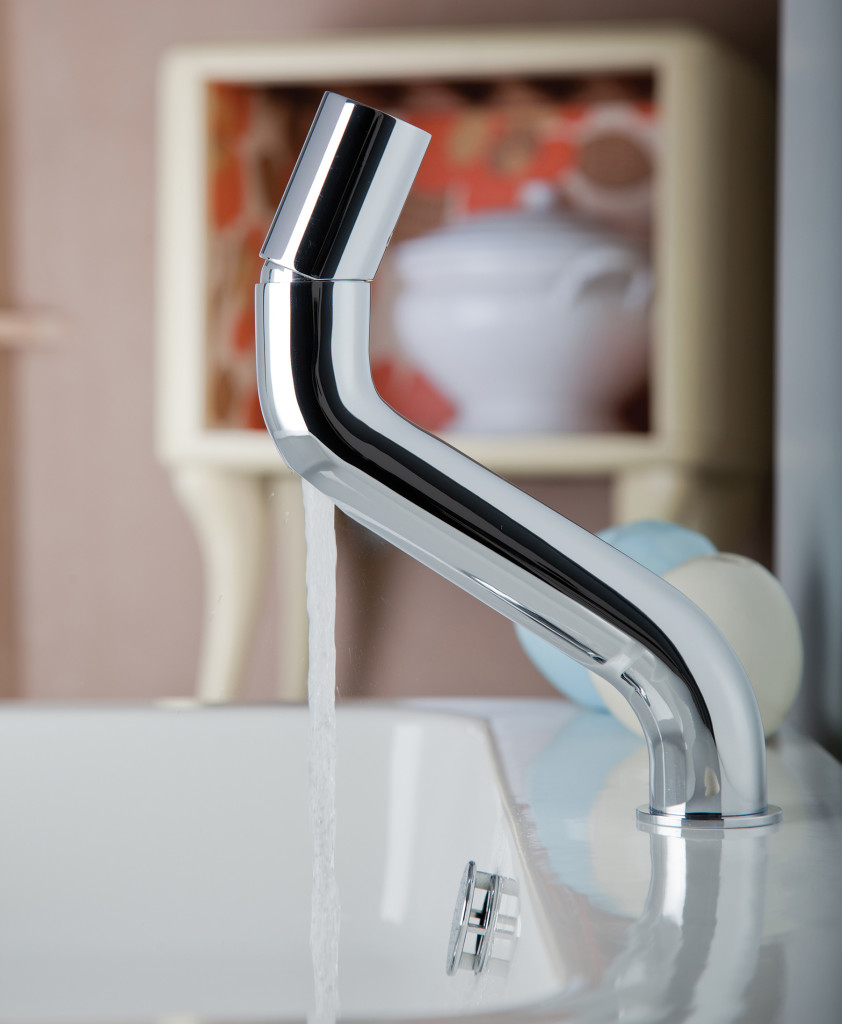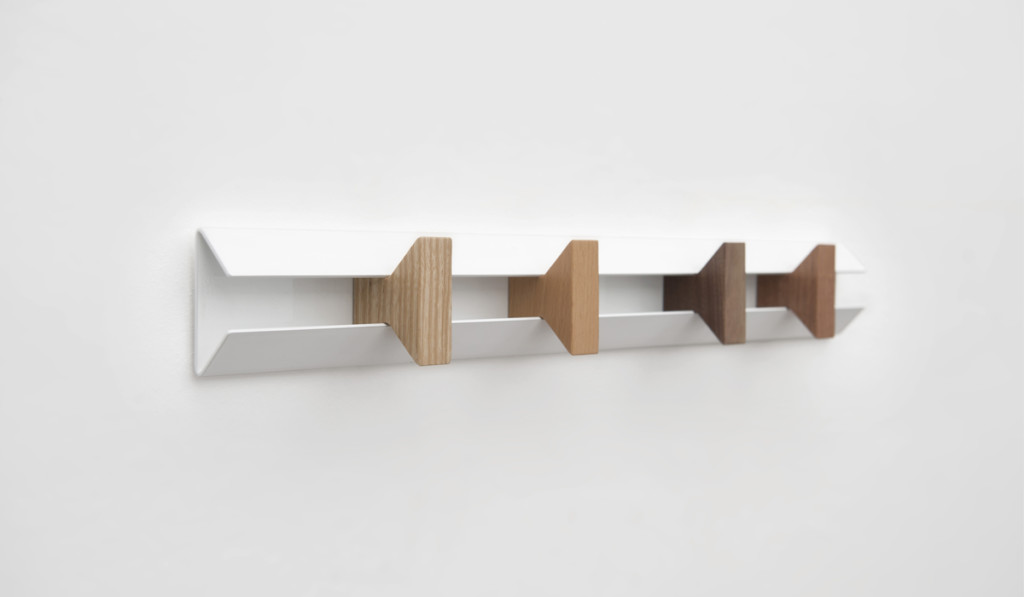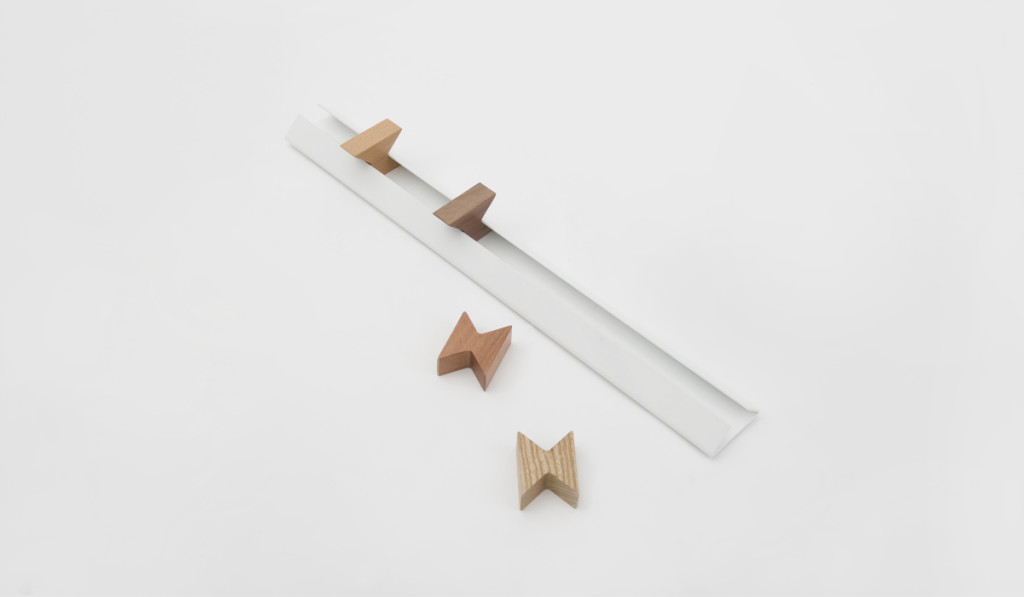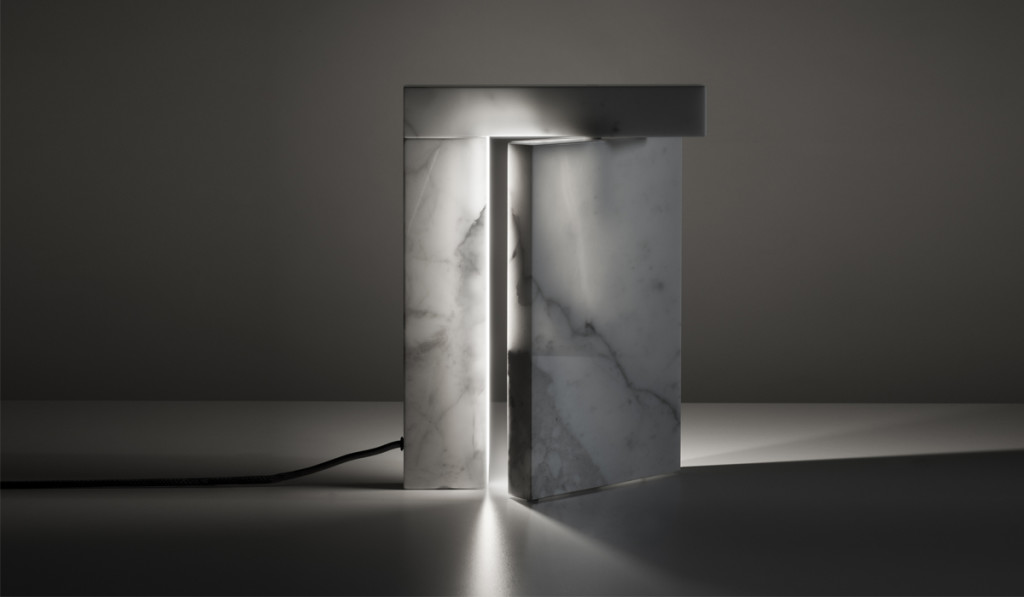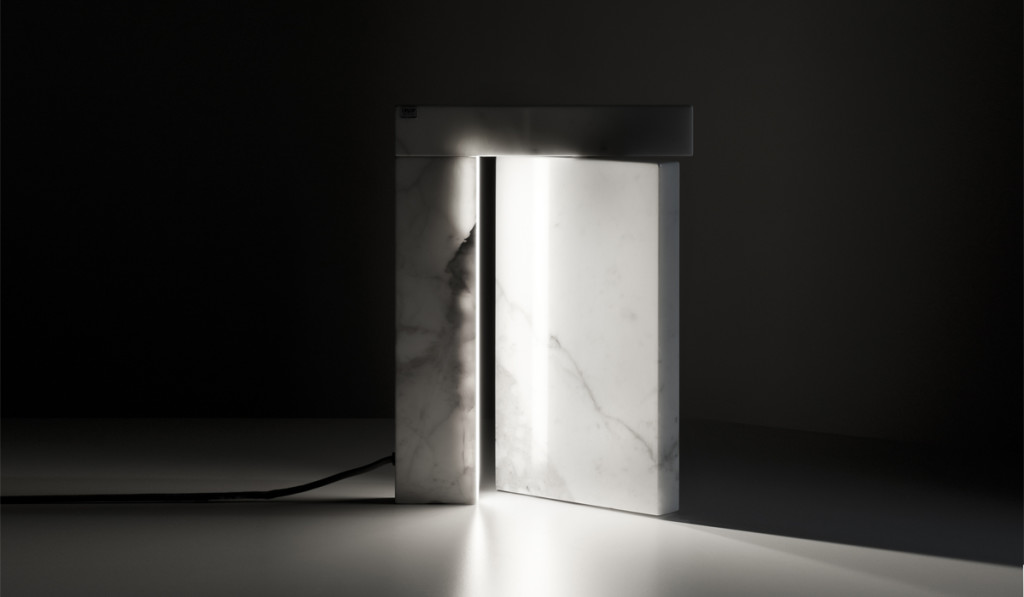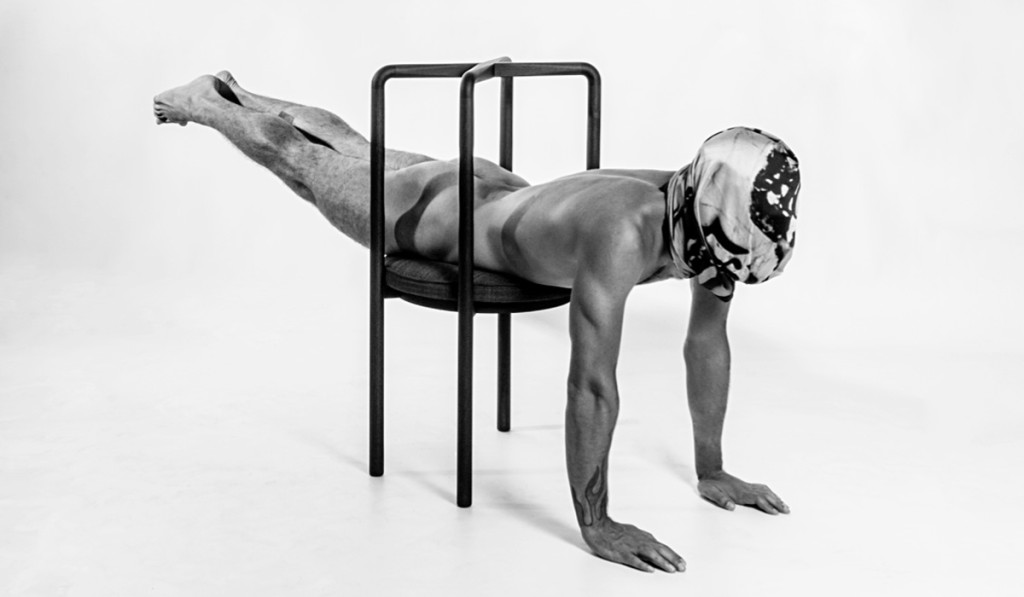Ha vinto tutto: Design dello Stupore nell’ambito del concorso Young & Design (2009), il prestigioso premio internazionale IF Gold Award (2010), il Good Design Award (2011-2012), il Red Dot Design Award (2011), il Compasso d’Oro ADI (2011). Brian Sironi ha 36 anni ed è uno dei più talentuosi designer in circolazione. Un orgoglio tutto made in Italy.
Originario di Seregno (Milano), Brian Sironi coniuga una visione internazionale e moderna del design con una cura artigianale della realizzazione.
Un artista contemporaneo capace di innovare gli oggetti di uso comune, mantenendo uno stretto legame con la tradizione.
Ha risposto con entusiasmo alle nostre domande, portandoci nel suo mondo, fatto di invenzione e umiltà, riflessione e professionalità.
Brian, prima di tutto, parlaci di te. Come sei diventato un designer e chi sono i tuoi “maestri”?
Mi sono laureato al Politecnico di Milano in disegno industriale, ma la mia formazione è continuata in bottega, nel territorio dove sono nato e cresciuto, la Brianza, a contatto con varie professionalità del sistema-design: falegnami, fabbri, intagliatori, tappezzieri.
Affermo spesso di aver avuto una formazione metà accademica e metà artigianale, senza la presenza di un maestro carismatico che mi abbia influenzato. Tuttavia la figura di Vico Magistretti mi è sempre stata di ispirazione, egli ha saputo usare la geometria come pochi: i suoi prodotti sono la somma e l’integrazione di forme pure, ogni dettaglio si iscrive in una rete perfetta di rapporti matematici che conferisce quell’armonia impalpabile che caratterizza i suoi progetti.
Aggiungo che la mia carriera di designer è iniziata relativamente tardi, a 30 anni, quando ho deciso di ritornare in Italia per realizzare il mio sogno di diventare un vero e proprio industrial designer. Ho soggiornato per un breve periodo negli Stati Uniti e proprio lì ho capito che solo in Italia potevo trovare il sistema-design di aziende in grado di dialogare con il progettista. Il periodo all’estero, però, mi è servito per conferire una prospettiva cosmopolita al mio lavoro, un’apertura necessaria per far dialogare il globale e il locale.
Secondo Bruno Munari la fantasia è libera, l’invenzione è pratica e utile, la creatività è l’insieme di fantasia e invenzione mentre l’immaginazione permette di vedere ciò che si è solo pensato. Nel tuo processo creativo quanto contano questi quattro elementi e quale credi sia preponderante?
Direi che l’invenzione è una delle componenti principali del mio processo creativo: la ricerco costantemente, prediligendo in particolare le invenzioni piccole ma sorprendenti, fatte un po’ al confine delle categorie archetipiche degli oggetti. Mi piace che l’invenzione abbia un carattere pratico e utile: nell’utilità delle cose c’è una poesia nascosta che cerco di svelare in ogni mio progetto. Ecco perché l’altro elemento a contare parecchio è l’immaginazione: visualizzare il futuro, prevedere degli scenari, si tratta di momenti narrativi nei quali mi è facile iscrivere i miei progetti, l’uso dei miei oggetti, la vita quotidiana delle persone.
La lampada “Elica” prodotta da Martinelli Luce è il tuo progetto più famoso. Parlaci di quest’opera così importante.
Il brief che mi ero dato era quello di progettare una lampada da tavolo a Led. Una lampada che fosse esclusivamente a Led e il Led doveva essere l’unica fonte di illuminazione con la quale potesse essere realizzata. Non volevo progettare una lampada molto “tecnica” o un prodotto di styling, desideravo invece che potesse durare nel tempo.
Pertanto mi sono ispirato alle forme pure delle grandi lampade del passato, come Atollo, Eclissi, Cobra. L’obiettivo dichiarato era creare una lampada senza tempo.
Lo spessore del braccio di Elica è stato dimensionato in funzione dei Led: 8mm è lo spessore minimo che garantisce l’alloggiamento dei Led e la resistenza alla lesione. Dato lo spessore minimo del braccio bisognava definirne la forma, conferendo una rotondità finale al braccio che è figlia della rotazione.
Come raccordare quindi un cerchio ad un altro cerchio più grande che renda la base stabile? Con un segmento dritto. Si ottiene quindi un cono. Altezza della lampada e lunghezza del braccio sono dimensionati secondo i principi della sezione aurea e non è presente nessun dettaglio tecnico a vista: il braccio stesso della lampada costituisce l’interruttore.
Ruotando il braccio la lampada si accende e si spegne, generando un effetto sorpresa. L’avvenuto spegnimento della lampada è supportato da un feedback sonoro che accompagna il movimento del braccio, un meccanismo semplicissimo ma efficace.
Il progetto era definito. Mancava l’azienda.
Il primo pensiero andò subito alla Martinelli Luce, proprio perché nella sua produzione vi sono alcune delle lampade alle quali mi ero ispirato. Martinelli produce lampade che hanno saputo creare un connubio perfetto tra forma e movimento, basti pensare alla Cobra, alla Serpente o alla Pipistrello. Era l’azienda giusta, sulla quale puntare.
Dopo vari tentativi convinsi telefonicamente Emiliana Martinelli a fissare un incontro proponendole di farle visionare un prototipo di lampada a Led da tavolo.
Mi presentai in azienda con due prototipi formali di Elica perfetti dal punto di vista estetico, realizzati in legno e cartone dipinti di bianco e con dei Led comuni: erano già, formalmente, il prodotto finito.
Devo ammettere che è stato amore a prima vista. Ad Emiliana e ai suoi collaboratori piacque subito molto. A dispetto delle forme semplici di Elica, il progetto da sviluppare era abbastanza complesso, ma nonostante il fatto che il primo incontro avvenne solo il 2 febbraio 2009, l’azienda riuscì a realizzare ben quattro prototipi perfettamente funzionanti per l’imminente Salone del Mobile di Aprile, durante il quale ha vinto il premio Il Design dello Stupore al concorso Young&Design, che è stato solo il primo di una serie di riconoscimenti che questo oggetto ha ricevuto, segnando la mia carriera.
Quando un progetto di design può considerarsi innovativo? Ci fai un esempio tra i tuoi progetti?
Secondo me un progetto è innovativo quando la risposta a un “problema” è formulata parlando un altro linguaggio, uscendo fuori dalla cornice.
La lampada Elica ha in sé l’innovazione di aver eliminato l’interruttore e di aver cambiato la gestualità dell’accensione, introducendo un nuovo movimento. Basta muovere il braccio e si accende, allo stesso modo si spegne.
Il miscelatore Virgo è innovativo perché ha ridotto gli elementi da tre a uno: Virgo è solo un tubo, non vi è più la maniglia, né la parte aggettante. Invece che pensare a come progettare ciascun componente, cosa che verrebbe naturale, mi sono concentrato su come ridurre le parti, riflettendo quindi sull’archetipo dell’oggetto miscelatore. Il tubo è semplicemente la forma che abbiamo dato all’acqua per portarla nelle nostre case.
Oggi il ruolo del designer si sta sviluppando in tante direzioni diverse. Quali sono per te le più interessanti?
Prima di tutto vorrei iniziare affermando che una delle cose che mi interessa di più, e che sembra quasi anacronistica, è lavorare sulla produzione, sui dettagli, cioè fare la professione alla vecchia maniera. Oggi invece sembra che ci si concentri su altre cose che riguardano l’immagine, la comunicazione, la “notiziabilità”, cose che distolgono dall’essenza del progetto e che per me sono solo un corollario.
C’è poi un grande mainstream che trovo corretto seguire, ed è quello legato alla sostenibilità, talmente importante da non essere più una corrente o un movimento, ma presupposto di ogni progetto, una conditio sine qua non per cui ogni prodotto che non è sostenibile è obsoleto.
Inoltre guardo con attenzione (senza per questo farmi prendere da facili entusiasmi) il fenomeno dei makers e della fabbricazione digitale. Lo sto osservando e me ne sto interessando da un po’, principalmente per un motivo: mi piace che sia un movimento nato dal basso, mi piace il suo carattere democratico, e forse mi piace più questo dei reali risultati che si stanno raggiungendo in termini di qualità dei prodotti, ma per questo credo ci sia un margine di miglioramento abbastanza ampio.
Sono inoltre molto attratto da tutta l’area che connette il design alla ricerca tecnologica che sta indagando Carlo Ratti nel Senseable City Lab del MIT a Boston mi sembra di estremo interesse: penso alle smart-city basate su sensori ed attuatori in grado di interagire direttamente con l’utente per raccogliere informazioni su quello che lo circonda, al progetto della Copenaghen wheel, tecnologia in grado di trasformare una qualsiasi bicicletta in un’elettrica a pedalata assistita. Sono esempi di progetti pionieri che stanno aprendo una nuova area di interesse, che probabilmente cambierà la nostra vita futura.
Allo stesso modo penso che ci sia un’altra area del design che ha un ruolo importante nella progettazione della quotidianità: è il design dei servizi proprio, perché i servizi occupano la nostra vita di ogni giorno, ormai più dei prodotti. Il passaggio dal possesso di prodotti all’accesso di servizi è ormai in corso, basti pensare al passaggio dall’automobile al car sharing. In Gran Bretagna e negli Stati Uniti sono presenti vari studi che si occupano di service design e qualcosa sta cambiando anche in Italia, basti pensare che l’ADI ha recentemente istituito una categoria del Compasso d’oro proprio destinata ai servizi.
Abilità di un designer è quella di creare qualcosa di nuovo, proiettato nel futuro. Come ti poni invece nei confronti del passato? Studiare ciò che è stato fatto prima è utile per la tua creatività?
Guardare al passato è importante, innanzitutto perché è proprio il passato a tracciare i confini del campo progettuale: sapere cosa è stato già fatto è fondamentale, permette di muoversi in un limitato spazio di innovazione.
Inoltre il passato serve da ispirazione, vedere come sono stati risolti determinati problemi, valutare gli approcci tenuti, si tratta di dati importanti che possono estendere la ricerca anche ad altri campi, non solo il design. Spesso guardare al passato nell’arte, nell’architettura, in vari altri settori limitrofi, serve ad aprire la riflessione e trovare soluzioni inedite.
“The WalkMan” si pone come obiettivo quello di lasciare spazio e visibilità ai giovani emergenti in qualsiasi campo artistico. Cosa ti senti di suggerire a chi ha deciso o sta decidendo di investire la propria vita nella creatività?
Rispondo citando Achille Castiglioni “se non siete curiosi, lasciate perdere.”
C’è bisogno di molta passione per la ricerca e l’esplorazione, soprattutto in profondità, proprio perché oggi essere creativi è in un certo senso una moda. Ci si improvvisa designer, fotografi, artisti, anche grazie al facile accesso alla tecnologia, che ha reso tutto più democratico ma anche prodotto un gran numero di progetti senza spessore, una sorta di appiattimento creativo. Uscire fuori dal coro in questo momento storico è difficilissimo, ecco perché credo che cercare la profondità sia essenziale.
Sito web Brian Sironi: http://www.briansironi.it/designer/
Photo: “Elica” by Benvenuto Saba, “Virgo” by Clerici associati, “Precaria” by Federico Villa, “Supplizio” by Sergio Andretti.
[divider]ENGLISH VERSION[/divider]
He won everything: Design of Stupor part of the Young & Design (2009), the prestigious international IF Gold Award (2010), the Good Design Award (2011-2012), the Red Dot Design Award (2011), the Compasso d’Oro ADI (2011).
Brian Sironi is 36 years old and he is already one of the most talented designers in circulation. A pride all made in Italy.
Originally from Seregno (Milan), Brian Sironi combines an international vision and modern design with a carefully crafted implementation.
A contemporary artist able to innovate objects commonly used maintaining a close link with tradition.
Responded enthusiastically to our questions, taking us into his world, made of invention and humility, reflection and professionalism.
Brian, firstly, tell us about yourself. How did you become a designer and who your “masters”?
I graduated from the Politecnico di Milano in Industrial Design, but my formation has continued in the shop, in the area where I was born and grown up, the Brianza, in contact with various professional system-design: carpenters, blacksmiths, carvers, upholsterers.
I often say that I had an half academic and craft formation, without the presence of a charismatic teacher who influenced me. However, the figure of Vico Magistretti always inspired me because he was able to use geometry as a few: its products are the sum and the integration of pure forms, each detail is part of a network of perfect mathematical relationships which gives the impalpable harmony that characterizes its projects.
I add that my career as a designer started relatively late. I was 30, when I decided to return to Italy to realize my dream of becoming a real industrial designer. I stayed for a short time in the United States and right there I realized that only the Italian design system of companies was able to communicate with the designer. The period abroad, however, helped me to give a cosmopolitan perspective to my work, necessary to open a dialogue between the global and the local.
According to Bruno Munari imagination is free, invention is useful and practical, creativity is the combination of imagination and invention and imagination allows you to see what you just thought. In your creative process how important are these four elements and which do you think is dominant?
I would say that invention is one of the main components of my creative process: I follow it constantly, favoring in particular the small but amazing inventions, made a bit ‘on the edge of the archetypal categories of objects. I like when it is practical and useful: in the utility of things there is a poem that I try to reveal in all of my projects. That’s why the other important element is the imagination: seeing the future, predicting scenarios, are narrative moments in which it’s easy to enroll my projects, the use of my items, the daily lives of people.
The “Helix” lamp produced by Martinelli Luce is your most famous project. Tell us something about it.
The brief was to design a LED table lamp. A lamp that was exclusively LED and the LED should be the only source of illumination. I didn’t want to design a lamp very “technical” or a styling product, I wished it could last over time instead.
So I was inspired by the pure forms of the great lamps of the past, such as Atoll, Eclipse, Cobra. The aim was to create a timeless lamp.
The thickness of the the arm of Elica was dimensioned in function of the LEDs: 8mm is the minimum thickness that guarantees the housing of the LEDs and the resistance to injury. Given the minimum thickness of the arm, it was necessary to define the shape, giving a final roundness to the arm that is the child of the rotation.
How to fillet then a circle to another larger circle that makes the base stable? With a straight segment. Then you obtain a cone. The lamp height and the arm length are designed according to the principles of the golden section and there is no technical detail exposed: the arm of the lamp is the power switch.
Rotating the arm the lamp turns on and off, creating a surprise effect. Turning off the lamp is supported by a sound feedback that accompanies the movement of the arm, a simple but effective mechanism.
The project was defined. But there was no company.
My first thought immediately went to Martinelli Luce, because in its production there are lots of lamps which inspired me. Martinelli produces lamps that have been able to create a perfect blend of form and movement, just think about the Cobra, the Serpente or the Pipistrello. It was the right company to bet.
After several attempts I convinced Emiliana Martinelli to set up a meeting to let her see a prototype of LED table lamp.
I introduced myself in the company with two formal prototypes of Elica, perfect from the aesthetic point of view, made of wood and cardboard, painted white, and with some Leds in common: they were already, formally, the final product.
I have to admit it was love at first sight. Emiliana and his staff immediately liked a lot. Although the simple forms of Elica, the project to develop quite complex, but even if the fact that the first meeting took place only 2 February 2009, the company was able to create four fully functional prototypes for the imminent Salone del Mobile of April, where it won the prize “the Design of Stupor” at Young & Design competition, which was just the first in a series of awards that this subject has received, marking my career.
When a design project can be considered innovative? Can you give an example of your projects?
In my opinion, a project is innovative when the answer to a “problem” is formulated by speaking another language, coming out of the frame.
The lamp “Elica” has the innovation of having eliminated the power switch and having changed the power on movement, introducing a new one. You just need to move your arm and it turns on and off in the same way.
The mixer “Virgo” is innovative because it reduced the elements from three to one: Virgo is only a tube, there is no handle, no projecting part. Instead of thinking about how to design each component, which would be natural, I focused on how to reduce the parties, thinking about the archetype of the object “mixer”. The tube is simply the shape we gave to water to bring it into our homes.
Today, the role of the designer is developing in many different directions. What are the most interesting for you?
First of all let me start by saying that one of the things that interests me most, which seems almost anachronistic, is working on production, details, I mean, doing the job in the old fashioned way. Today, however, it seems to be focus on other things concerning the image, the communication, the “newsworthiness”; things which take away from the essence of the project. For me they’re is just a corollary.
Then there is a big mainstream to follow, and that is linked to sustainability, so important that it can’t be a current or a movement, but the assumption of each project, a “conditio sine qua non” whereby each product that is not sustainable is obsolete.
I also watch carefully (without getting caught by over enthusiasm) the phenomenon of makers and digital manufacturing. I’m looking and I’m interested mainly for one reason: I like that it is a movement from the bottom, I like its democratic character, and maybe I like this more than the real results they are achieving in terms of product quality, but for this I think there is a room for improvement quite broad.
I am also very attracted by the whole area which links the design to the technological research. Carlo Ratti in investigating on it in Senseable City Lab at MIT in Boston. I think about the smart city based on sensors and actuators able to interact directly with the user to gather information about what surrounds him, about the project of the Copenhagen wheel (a technology capable of turning bike into an electric assisted pedal). These are examples of pioneer projects which are opening up a new area of interest, that will probably change our future life.
In the same way I think there is another area of design that has an important role in the planning of daily life: it’s the design of their services, because the services occupy our daily lives, now more than the products. The passage from the possession of access to services products is now in progress, just think about the transition from car to car sharing. In Britain and the United States there are several studies that deal with service design. Something is changing in Italy, just thin about the ADI, which has recently established a category of its Compasso d’oro for the relevant departments.
The ability of a designer is to create something new, projected into the future. How do you relate to the past instead? Studying what has been done before is useful for your creativity?
Looking to the past is important, first of all because the past draws the boundaries of the design field: knowing what has already been done is crucial, It allows us to move in a limited space of innovation.
In addition, the past serves as inspiration. Seeing how certain problems have been resolved and evaluating the approaches taken are important data that can extend the research to other fields, not just the design. Frequently looking to the past in art, architecture, in several other adjacent sectors, serves to open reflections and to find innovative solutions.
“The Walkman” aims to leave space and visibility to emerging young artists in any field of art. What do you feel to suggest to those who have decided or are deciding to invest their lives in creativity?
I reply quoting Achille Castiglioni “if you’re not curious, forget it.”
There needs to be a lot of passion for the research and exploration, especially in deep, because today being creative is a fashion. It’s possible to be designers, photographers, artists, thanks to the easy access to the technology, which has made it more democratic but also produced a large number of projects without substance, a kind of flattening creative. Coming out from the chorus in this historical moment is very difficult, this is why I believe that seeking the depths is essential.
Traduzione a cura di Antonio Gaito





